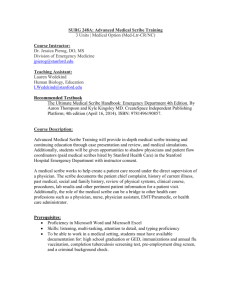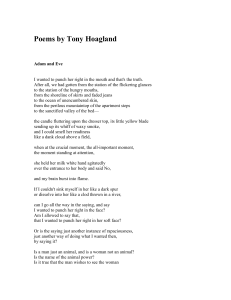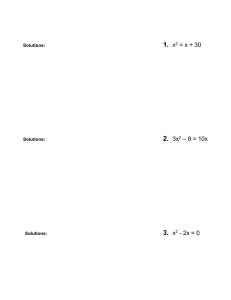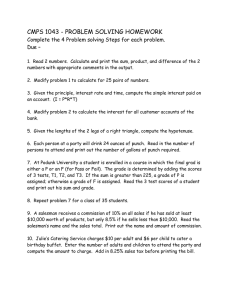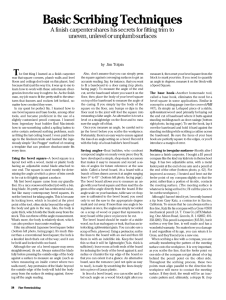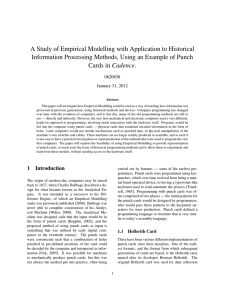Part Layout Introduction
advertisement
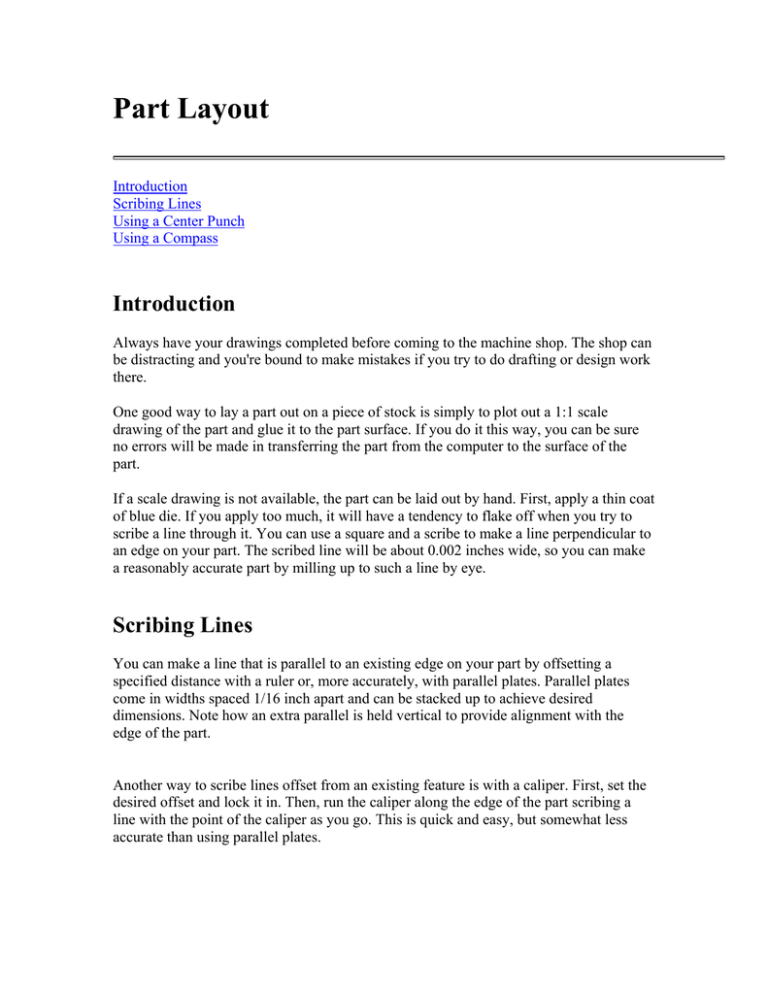
Part Layout Introduction Scribing Lines Using a Center Punch Using a Compass Introduction Always have your drawings completed before coming to the machine shop. The shop can be distracting and you're bound to make mistakes if you try to do drafting or design work there. One good way to lay a part out on a piece of stock is simply to plot out a 1:1 scale drawing of the part and glue it to the part surface. If you do it this way, you can be sure no errors will be made in transferring the part from the computer to the surface of the part. If a scale drawing is not available, the part can be laid out by hand. First, apply a thin coat of blue die. If you apply too much, it will have a tendency to flake off when you try to scribe a line through it. You can use a square and a scribe to make a line perpendicular to an edge on your part. The scribed line will be about 0.002 inches wide, so you can make a reasonably accurate part by milling up to such a line by eye. Scribing Lines You can make a line that is parallel to an existing edge on your part by offsetting a specified distance with a ruler or, more accurately, with parallel plates. Parallel plates come in widths spaced 1/16 inch apart and can be stacked up to achieve desired dimensions. Note how an extra parallel is held vertical to provide alignment with the edge of the part. Another way to scribe lines offset from an existing feature is with a caliper. First, set the desired offset and lock it in. Then, run the caliper along the edge of the part scribing a line with the point of the caliper as you go. This is quick and easy, but somewhat less accurate than using parallel plates. Using a Center Punch Locations of holes referenced to corners can be found by crossing two scribe lines. Hole positions should be marked with a center punch. If accuracy is important, use a magnifying glass to set the punch on the mark. Then, give the punch a couple of light taps with a hammer. The centerpunch creates a dimple that tends to guide the drill bit to the proper location. Without the dimple, the drill bit can "walk" away from the desired location. Using a Compass Circles and fillets can be laid out using a compass. Just set one end at the center of the arc, then scribe the arc.

